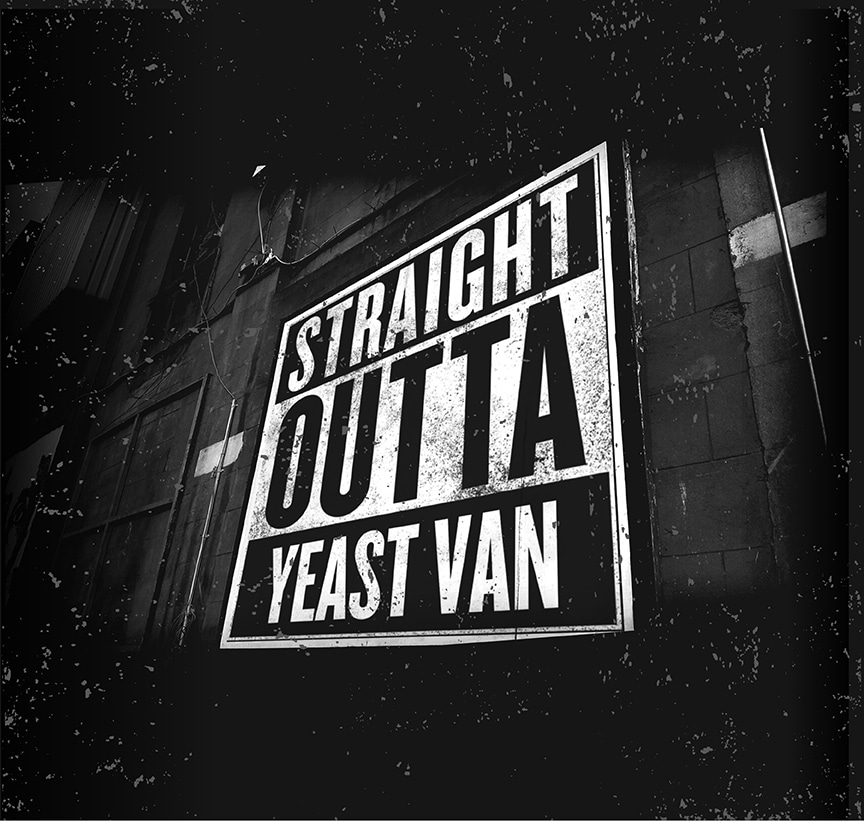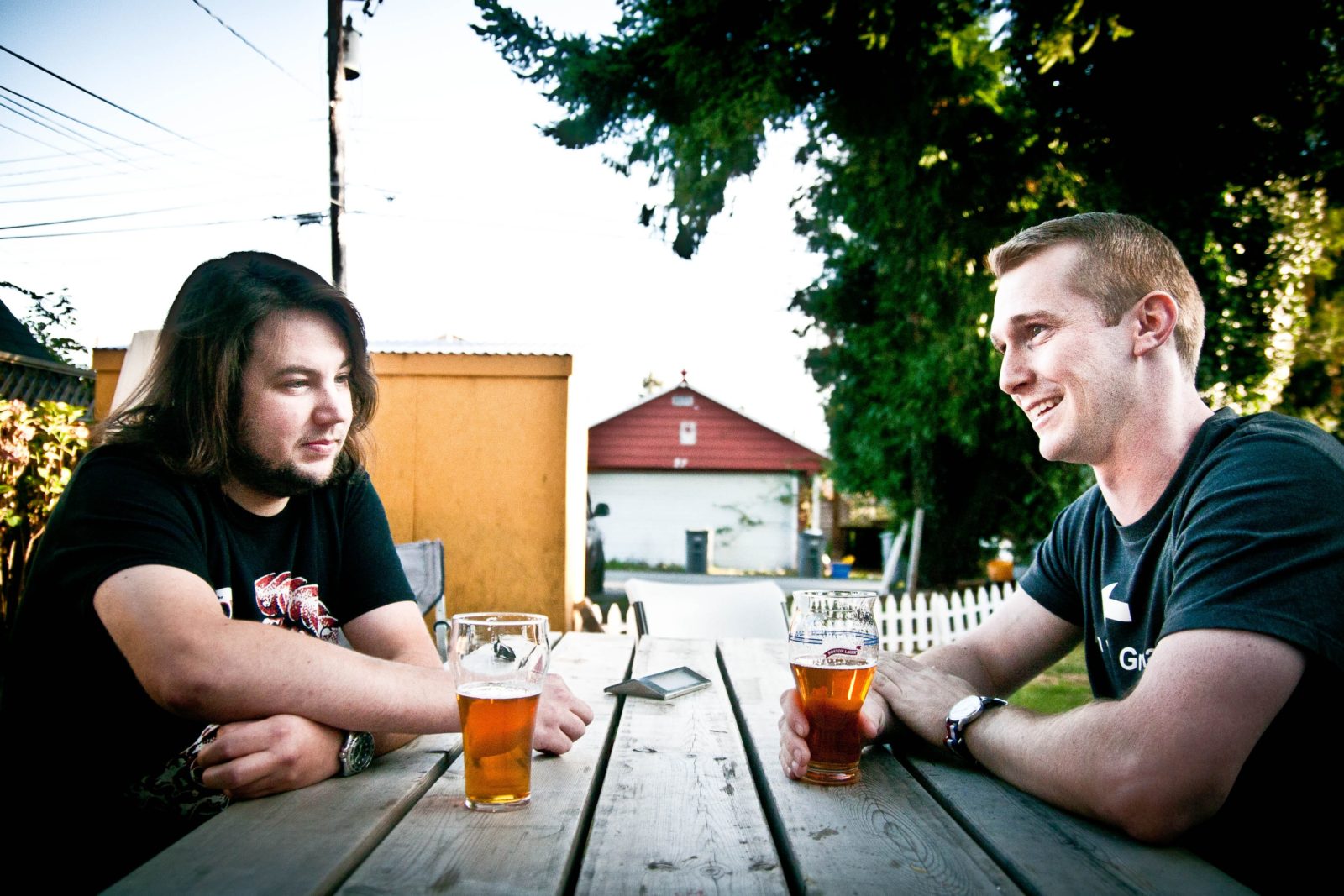
Hey dude, did you know there’s acid in your beer?!
Indeed, some of B.C.’s brewers have been purposely adding acid to their beers for a while now – lactic acid, that is. The sour beer craze is only getting bigger and bigger, but while some sours taste just slightly tart, others come across as mouth-puckeringly sour. With such a big difference from beer to beer, perhaps it’s time for a sourness scale similar to ABV and IBU to better inform the consumer.
Michael Kuzyk, founder and brewer at Category 12 Brewing, certainly thinks so.
“IPAs all have IBU ratings on them to give an idea of how bitter the beer is,” he explained. “With the rise of sour beers in the BC beer scene, we wanted to let people know how sour their beer is.”
As such, along with the usual ABV and IBU, the label for Category 12 Brewing’s Dry-Hopped Sour also lists the beer’s total acidity (TA) as 4.3 g/L.
Brewers don’t just dump lactic acid into their beers to sour them; it is generated by useful bacteria as part of the brewing process. In the traditional Belgian method of barrel-aging sours, Lactobacillus and Pediococcus bacteria do the work slowly over months and years. The contemporary kettle souring method is much faster, but brewers generally use just Lactobacillus because Pediococcus can produce off flavours that require aging, blending and other interventions.
To learn more about total acidity, I visited Kuzyk at his brewery in Saanichton, just north of Victoria. I brought along a clutch of different sour beers. Category 12 sacrificed a bottle of Cantillon Kriek that was in its fridge – luckily we only needed 30 mL for the test so everyone working that day got to have a taste. And I included some lemonade as a baseline test.
We set up in the brewery’s lab. Kuzyk has a PhD in microbiology and biochemistry. As he poured out the beers into some C12-branded beakers (which are also used in the tasting room), he described the procedure.
“We measure the levels of lactic acid in our wort as it comes out of the kettle before it has had any fermentation or any acidity, and that’s the baseline,” Kuzyk explained. “And then you measure it again when it’s finished and that net change is due to the presence of lactic acid.”
Kuzyk said the baseline for their Dry-Hopped Sour is 1.1 g/L. We couldn’t measure the baseline acidity for the other beers we tested, but Kuzyk explained that most beers would fall within the 1-1.1 g/L range so the slight difference would not affect our final numbers much.
First, because dissolved carbon dioxide can skew the test results, we had to decarbonate each sample by pouring it back and forth until it was flat. Then, we would measure the pH of each beer and slowly add sodium hydroxide (NaOH) until the pH rose to 8.2. Based on how much was required to neutralize the beer’s acidity we could then compute each beer’s final acidity.
Total Acidity is measured in grams per litre. The range of total acidity in beer is approximately 0 to 15 g/L.
“Anything above 15 g/L will stress the yeast out too much,” Kuzyk stated.
Time to let the acid testing begin! After we donned safety goggles, Kuzyk measured the pH in the first beaker containing lemonade as 2.45. Then he began adding drops of sodium hydroxide in a slow trickle and we watched as the numbers on the pH meter began to climb. We tasted the lemonade and agreed that it didn’t taste very sour, but that’s because it was heavily sweetened with sugar.
“I get a lot of joy out of finding the science in this,” Kuzyk commented as he worked. “When I first embarked on the path to leave research behind it kind of felt like I was leaving science behind.”
According to his wife, Karen, who manages the brewery, “He’s in his element in the lab.” They have been slowly gathering more and more lab equipment for him to use. “We just shut the door and ignore him,” she joked.
Soon, we had our first result: 26.6 mL of NaOH added. Kuzyk punched this value into a spreadsheet, and presto, we learned that the lemonade’s total acidity was 6.6 g/L.
Over the next 90 minutes we tested a wide range of sour beers. The pH did not necessarily reflect the beer’s total acidity – several beers had virtually identical pH readings of 3.24-3.26, but their TA levels ranged from 4.3 to 8.4.
Empirically, the actual sourness of the beers was not necessarily reflected in what we tasted. For instance, Bridge’s Quaywi (6.4 TA) tasted more sour than Nectarous (9.1 TA). We figured that was because Nectarous has a fruity sweetness from dry hopping that counteracts some of the sourness.
And even though Cantillon’s Kriek had a TA of 8.4, the second highest we measured, it didn’t come across as extremely sour. Similarly, Moon Under Water’s Tempus Corvi’s sourness seemed more subtle and nuanced. This might be explained by the fact that both were barrel-aged rather than soured in the kettle, which results in more complex flavours.
As expected, the gose with its salty tartness (4.0 TA) and the lighter Berliner Weisse (4.9 TA) had relatively low ratings, but so did Category 12’s, which registered as second lowest at 4.3. Kuzyk explained that is intentional: “We want it to be an introductory sour for people.”
At this point, Category 12 is the only brewery in BC that lists total acidity on its labels. Some, including Four Winds, do measure it for their own purposes, but we will have to wait and see if TA will find its place alongside ABV and IBU on craft beer labels.




